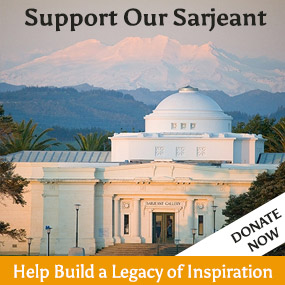Let’s recap. This korero, ‘Nga Kupu Aroha’, Words of Love, started in September 2004 outlining an already year-long NZ community quest to reduce the demand for crystal methamphetamine (‘P’) amongst some of our most difficult-to-deal-with citizens, the people we call Nga Mokai, a term coined by Jimmy Baxter.
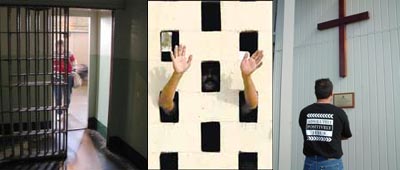
It’s a more useful descriptor than many others: ‘dole bludger’; ‘drug addict’; prisoner, ‘Maori’; or ‘gang member’ upon which society has become fixated.
Gangs create what oft quoted sociologist Stanley Cohen (Cohen, S. 1972:9) calls ‘moral panic’. As a word, ‘gang’ has lost real meaning in NZ for it conjures up the image of young-violent-leather-clad-Maori working off testosterone by terrorising the local populace. However, globalisation has brought us real criminal gangs, nicely dressed chaps of any of a number of ethnicities, Israeli, Russian, African, Asian, and Arabic.
Nevertheless for most New Zealanders ‘gangs’ are the Black Power and the Mongrel Mob, Hemi and Hori in leathers lurking around the mall. Our moral panic about these gangs currently manifests in a zero tolerance policy whereby, beyond delivering punishment, government agencies are constrained from dealing with their members. Take away the gang description from a person and you are left with ‘community member’, and the particular community we say is ‘Nga Mokai’.
In his recent ‘History of New Zealand’ the late Michael King, in treating Baxter, described Nga Mokai as
“ the underprivileged or tribeless young people who were having difficulties coping with the materialism and the competitiveness of urban culture”.
King M, (2003:460)
I suppose we’re using ‘Nga Mokai’ as a proxy for the Black Power and the Mongrel Mob to sidestep the prejudice of the ‘system’. Law enforcement authorities have long held that gangs are key NZ players in the manufacture, distribution, and use of methamphetamine and there is widespread evidence to support that. But the game has changed. A gram of rock methamphetamine can be bought in Asia for $20 and sold in NZ for $1,000.
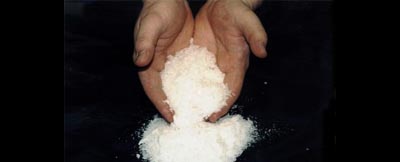
With high profit winking at the desperate, new players have entered the market. If anything gang involvement seems to be trending downwards due to effective supply-reduction strategies run by Customs and Police, buttressed by the community based demand-reduction strategies driven by Community Action Youth and Drugs (CAYAD) projects such as Mokai Whanau Ora.
We have targeted methamphetamine, rather than all ‘drugs’, because there is broad community agreement that this particular substance is relatively more harmful and more harmful faster, than most other recreational substances we’ve collectively encountered.
Since setting out with the Mokai Whanau Ora kaupapa we have enrolled key leaders from the Mongrel Mob and Black Power – said to be the two biggest NZ gangs – into the move to confront methamphetamine. Our stance has been to own, not to disown our people, even if they are current users. Our basic proposition has been to build a better future for our own and each other’s whanau.
Whanau is a concept broader than that of family, and it does not necessarily follow a patriarchal hierarchy or strict genealogical lines. Authority and influence can sit outside of the nuclear unit, and parent-like roles can be shared. People can and will poke their nose into each others business.
As noted we call our community ‘Nga Mokai’ and we call the future proposition ‘Whanau ora’ – family well being. We work at it across many fields – health, housing, education, justice and recreation. We look to work with each whanau and to help them to specify their desired future in detail, and do it by identifying observable measures and targets.
We have grown a small but highly effective workforce of change agents prepared to drive the kaupapa and they are and have been out there at the front line, working hard.
In Wellington our team has focused on health and has won competitive DHB contracts to supply community health development services. The first of these is ‘Kai o Te Ata’, a programme that intends to enroll the Mokai whanau rangatahi, our school aged youth, in making sure that they get a good breakfast and that their younger siblings also get a good breakfast. A good breakfast is essential to a good day at school. Research shows that where kids who have not previously had a good breakfast start getting one, their concentration and ability to learn improves as does their general behaviour. Getting the teenagers involved empowers them and the children of the family regardless of whether mum or dad are up to it or not.
Edge works out of Turangi and he has been working hard with the Mongrel Mob, establishing a labour pool “Rent a Bro”, and trying to engage with the roading industry. The industry had been lamenting the shortage of labour and had been mooting recruiting workers from Samoa. Edge and his brothers approached industry leaders and asked “What is it that we have to do to get our guys into work?” They were told, “Get them trained”, and so they did. Fresh and flush with qualifications the guys came back to the industry only to run into a number of attitudinal barriers. The fact that the industry favoured drug testing was raised. “Fair enough”, said Edge and the guys, “test away and sack anyone who breaks the no drug rules”. After a fair amount of shilly-shallying it became apparent that the industry leaders were afraid that sites and projects would be overwhelmed by ‘gang culture’. In fact the guys would be quite happy to be subsumed into the workplace culture but fear and apprehension – that moral panic again – won’t allow it.

Edge and Mane have continued to work closely often sorting out little issues that crop up between the Mob and the Blacks that if left unresolved can flare up into violent disputes and result in tragedy. This is incredibly valuable work both from preventing a waste of policing and criminal justice resources as well as human potential, but it generally goes unrecognized.
Mane has helped his marae at Runanga secure enough resources through Lotteries and other funding (the best part of $200,000) so they can start their rebuilding programme. This has been accompanied by intensive waananga learning tribal lore and whakapapa.
Mane’s tribal work in the North is also coming to fruition with a tourism enterprise starting to bear fruit.
It’s too early to speak of outcomes from all these activities, but there is no doubt that the effort has had impact.
Most NZ gangs – even beyond the Mob and the Blacks – have had, or are having, an internal debate about the desirability or otherwise of being involved with methamphetamine. And that internal debate has been picked up and amplified at a community level, marae, sporting club and street. People come to similar conclusions in the face of similar evidence.
As NZ gangs are predominantly Maori awareness of methamphetamine amongst Maori communities is relatively high. There is widespread community based action. ‘There’s no P in ‘Murupara’ is one example (an aspiration rather than a present fact) as is the ‘P Free Orakei’ movement.
Orakei, better known to many New Zealanders as ‘Bastion Point’ is right in the middle of our most sped up city. It is a small and highly interconnected community, where people are virtually living in each other’s face. It is difficult to reduce tolerance to an activity when the practitioners are your own relations and family. Denial is not an option. There’s no escape route. Waananga are held at the marae, the names of traditional ancestors are invoked, action plans are hatched, and whanau support each other by challenging unsustainable and destructive behaviours from within. It is relentless.
I sense that the Maori community will recover from the methamphetamine epidemic more quickly than the general NZ community. It’s well-heeled white New Zealand that will need help for this one.
It’s hard to get a fix on what’s what at anything more than a local level other than noting the ebbs and flows of supply through the binge behaviour of users – rosy-glassed euphoric days followed by cruel periods of depression, paranoia, and bizarre behaviour.
And, as mentioned, it’s become apparent to all that use and supply of methamphetamine is more than an issue for Maori and involves more than just gang members. There’s plenty of hype about methamphetamine and a tendency to demonise all those involved.
Whilst it’s desirable to rise above the hype, because of the secretive nature of the user groups due to the severe legal penalties, it’s hard to get to the facts. A useful contribution has been the research undertaken by Dr Chris Wilkins and a team from the Centre of Social and Health Outcomes Research and Evaluation, Massey University,

From a study commissioned by the NZ Police, Chris and his fellow researchers have produced ‘Research Briefings on the Socio Economic Impact of Amphetamine Type Stimulants (ATS) in New Zealand’ Massey University, Dec 2004.
The briefings are in three parts.
The first part– Level of Use and Health Harms – presents these key findings:
- Approximately 100,000 NZers had used an ATS drug in the previous year in 2001
- The highest level of ATS use were among men aged 20-24
- The rise in ATS use may lead to increased demand for other ‘hard’ drug types
- Crystal methamphetamine users had the highest level of intravenous drug use
- Frequent methamphetamine users reported high levels of psychological problems
- ATS use in New Zealand is at a similar level to that of Australia
- One in five patients entering drug treatment are now amphetamine users
A salutary note for those of us working at the front line is attached:
“The level of mental health problems reported among frequent methamphetamine users indicates that these drug users should be approached with caution to avoid triggering any violent defensive or self-harm response”
The second part treats ‘The Black Market for ATS and Use of ATS by Arrestees’ and reports:
Methamphetamine use was linked to violence and property crime
- The dollar value of the ATS market is equal to that of the cannabis market
- Arrestees reported high levels of methamphetamine use
- Arrestees reported methamphetamine was the drug most likely to make them feel angry
- The methamphetamine market was more secretive and insular than the cannabis market
- Law enforcement is beginning to impact on methamphetamine use and supply
- Methamphetamine may have effectively doubled the illicit drug trade in NZ
The third part looks at ‘Future Trends in the Use and Supply of Methamphetamine’ and concludes;
- New users of methamphetamine include business people, young women, Maori and lower socio-economic group
- More users are injecting methamphetamine
- Methamphetamine was considered easily available
- A greater cross section of people are now selling methamphetamine
- Methamphetamine dealers are selling the drug in smaller cheaper weights
A little note in the body of the text of this final section caught my attention.
Whilst “Drug enforcement and drug treatment key informants commonly reported more ‘gangs’ selling, more sales from ‘drug houses’ and more sales by teenagers”
“User key informants reported less ‘gangs’, more ‘professional people’ more ‘young females’ and more ‘violent types’ now selling methamphetamine.”
Despite the appalling use of English I hope this ‘less gangs’ observation from an independent piece of research is a sign that our collective efforts are having effect.
Success has many fathers and the cops would equally (and fairly) say that they’re locking the bad boys up and that’s why gang involvement might be down. It’s true that some pretty tough dudes have been given some very long sentences. We now have intergenerational and international clusters in our jails the likes of which we have not seen before. As these guys settle in to long terms in jail old rivalries will be put aside and new and stronger alliances and networks will be formed. In fact there is a suggestion that the present P epidemic was more or less triggered by a ring formed in an Auckland prison.
The reality of damaged mental health and a lower threshold of anxiety arousal through methamphetamine use, combined with fact that some people will continue to use whilst they are inside means that prisons many also become more violent than they already are.
At a time when we have our biggest prison population ever – bizarrely as a result of the 1999 longer, harsher, and lower threshold sentences petition championed by the hypocritical Graham Capill – we will also face our most complex and severe prison management challenges.
From a community perspective these prisons are either going to become centres of excellence and salvation where people ‘re-author’ their lives or they are going to become black holes of crime that suck human potential into a vortex of failure and emptiness. It’s some relief that we have such a resource in New York-based Kiwi, John Wareham. John’s experience working with long term inmates at the biggest penal colony in the world, New York’s Rikers Island, with the Eagles Foundation will be invaluable to NZ in the years ahead.
In the meantime the Mokai Whanau Ora proposition becomes increasingly important. The families of these men are now fatherless. At home, children and partners face a script in which is written a story of failure by default unless we can create another option.
One element of the challenge is keeping the kids of these vulnerable whanau at school. Too many NZ kids are locked out of their local high schools by dint of social myopia and use of exclusion as a too early option. If a kid is playing up then resolving the individual’s behaviour at a local level is part of the overall educational challenge. The key players here are school trustees who determine the school’s policy. These people carry one hell of a load for our community, and typically, they are people who can afford to sacrifice to be there. Like the Parliament of old the role practically excludes those who can’t afford to participate. In that case we skew the school board representation towards the relatively wealthy and they then call the shots.
Often the shots take the form of a school disciplinary action resulting in the exclusion of the child. To my observation, despite the severe impact that exclusion will hold for the young person, these processes do not seem to follow the rules normally required to ensure natural justice. Like the prison population the relative rates of high school exclusion are skewed against Maori kids. Beyond taking a learning-based and restorative approach to schoolground justice, research indicates that the most effective way of keeping kids in school is through the excellence of the teaching.
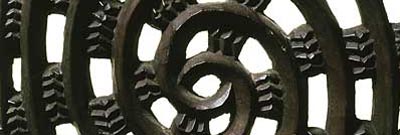
Community effort is required to give the teachers the ‘space’ uninterrupted by street politics or interpersonal power struggles amongst the youth. This is doable. At a Mokai Whanau Ora community level this effort is most likely to succeed if it is supported by the efforts of a dedicated fieldworker, a ‘trustworthy facilitator’ who can work alongside the Nga Mokai community and help negotiate ways through the various barriers, both bureaucratic and personal that impeded an individual, or group of individuals, from participating and succeeding socially and legitimately economically.
These people need to work from and within their community. Here is the key. These are the required change agents, the effective servant leaders of their particular community, public servants, but not part of the Public Service. This is where the roots of effectiveness draw their necessary juice.
We need the ability to foster and support such individuals to take up leadership service roles from within and amongst Nga Mokai communities. We need brokers and entrepreneurs. We need to link the excluded and alienated back into society and one of the best ways to do that is to legitimately re-engage with the economy.
Even at a time of relatively full employment, Nga Mokai are least able to compete in the labour market. When the numbers of the unemployed were high the hard nuts were easy enough to lose in the volume. But now they are ‘the’ customers that must be dealt with, and, looking backwards at the tsunami wave of unemployed people with complex issues who will flow out of our prisons, and taking into account the likely impact of the current epidemic of methamphetamine use, we better get ready. This is not only an issue of social justice, but a necessity for a truly vibrant economy and an inclusive society.
The tensions at play within the public sector, as politicians try to placate an ill-informed and intolerant public whilst being pragmatic about what works reflect the paradoxes and chaos that exist on the social edge of our communities. Within all these tensions where there is dialectic there is usually a ‘third way’ an answer that sits in another paradigm to the one into which the problem is currently locked.
It’s a truism that if you keep on doing the same old thing you’ll keep on getting the same old result. The prevailing approach to social development is to bring someone from outside the troubled community – consultant, a professional of some form – to resolve the particular problematic.
The alternative and to my view preferable approach is to identify, nurture and grow people and solutions from within the target community itself, even if is chaotic. The change agent doesn’t have to be a paragon. He or she will go through a personal transformation as the community goes through its own transformation. As you might pick from Edge’s difficulty in negotiating work for Mob members, for this community-caste there is no easy route to redemption. Yet, within the resolution of their needs lies the pathway to broader positive social outcomes for all New Zealanders.
This is why we have been bringing through leaders from the very target population themselves. These are people who will grow to be considered by both general public and the Nga Mokai community themselves as ‘trustworthy facilitators’. These change leaders need to be persons of standing in the eyes of the target community (even if they currently have no or low standing in the eyes of the ‘system’). The leader needs to be committed to pro-social change and to use their leadership to positively influence the group and to support involvement in legitimate and positive activities.
This is a track that I’ve trodden myself and I know it works.
These-a-days in the public sector it seems that institutional knowledge has been extinguished by a generation of restructuring. Even surviving wisdom needs to be proven. It’s all action-research and evidence-based policy and I don’t have a clue what they’re talking about, so I’ve gone back to school to learn about this stuff by way of undertaking a Master of Social Practice degree.
And crikey, what do I find? There’s a body of literature out there that backs up what I’m saying. It seems to be internationally established that the sort of change leader I’m talking about tend to know their stuff. They usually have solutions because they’ve either been through it or seen it. Writer Jan Fook (1996:4) says such people practise ‘artistry’ whereby they recognise significant factors in situations and make connections between seemingly unrelated experience and have the ability to make judgments to act in situations which are often unpredictable, complex, changing and uncontrollable’.
This reliance on and expectation of the change agent’s capacity to deal with chaos is the antithesis to the highly prescribed centre focused process favoured by controlling bureaucrats. I’ve also run into a beautiful notion proposed by Myherhoffer (1982:100) who talks of ‘definitional ceremony’ whereby a community of people ‘re-author’ themselves by actively engaging and participating in their own history.
The notion of reversing history and redefining the community’s future from within is at once redemptive and progressive. It intimates the breaking of the cycle of deficit behaviour and is the harbinger of the creation of a sense of capability and potential. And for us, Nga Mokai, the place to foster that capability and potential is amongst whanau, expressed across the whanau ora dimensions of housing, health, employment, education and recreation, and tied to reality by metrics, specific objectives and measures.
I better go, but hey, here’s a recreation related story to finish on.
I may have mentioned my interest in footy, league rather than union, wouldn’t you guess, it’s a bit more underground. I was a keen player but not all that good. I did once share the ‘Hawke’s Bay Rugby League Sportsman of the Year’ with Neil ‘O’ Dowd but that was for my off field efforts. I’m an organiser so it’s no surprise that I’m the Chairman of Rugby League Hawke’s Bay.

Rugby League is a minority sport in NZ played mainly by Maori and Pacific Islands people. It was fostered by Princess Te Puia as a ‘Maori’ sport, and indeed today Te Atai Rangi Kaahu, the Maori Queeen, continues Te Puia’s tradition as a rugby league patron. Rugby League, or Northern Union as it was often called, arose as a result of a breakaway from Rugby Union in 1895. Tradition holds that working class miners from the north of England found it necessary to figure out a way to be paid in case of injury as a result of their sport. In the eyes of some this crossed the divide between ‘amateur’ and ‘professional’ and led to what became an acrimonious split between the Union and the League – these days rendered obsolete by the arrival of professional rugby union.
Anyway, back to the history; there are reports of some New Zealanders who played rugby league prior to 1900. South African sources say that rugby league was played during the Boer War by Yorkshire regiments and, in that context, in 1900 a New Zealand Field Artillery rugby league team took part in a challenge for the Zeerust Rugby League Trophy. It was won by the New Zealanders (Source: Kiwis Association Newsletter No 12 August 2000).
Generally, the commencement of Rugby League in New Zealand is traced back to 1908 although in 1906 A B Baskerville, generally considered as the sire of NZ Rugby League, wrote ‘Modern Rugby Football. NZ Methods’.
Well, as in a shaggy dog tale worthy of Mr Kumar, Rugby League Hawke’s Bay holds a beautiful solid silver cup called the ‘Charity Cup’ marked with the first winners ‘Ahuriri FC 1905’.
On seeing the Cup for the first time my heart skipped a beat. Was this a potential rewriting of Rugby League history in NZ?
It took a fair bit of research to discover the answer. With help from Te Papa we learned that the Cup was made in Birmingham England 1903/ 1904. The Napier library gave me access to the records of a now discontinued local newspaper ‘The Daily Telegraph’ and there on Friday September 22 1905 was a report:

“The silver cup generously presented by Messers Ryan Bros., of Wellington, to the Hawke’s Bay Rugby Union is a handsome trophy and should induce keen competition for its possession, the actual future allocation of the trophy has not yet been decided upon by the governing body, although the win, of the Ahuriri club last Saturday entitles the wearer of the green jersey to hold it for twelve months .The cup which will be on view in town for a few days , will be presented to the winners at their annual social on the 9th of next month”.
The Cup was won outright by Ahuriri over three successive seasons and in 1907 the HBRU retired it from competition and gifted it to Ahuriri. In 1911 the Ahuriri Club turned to Rugby League (harder, faster and more exciting for my part) and in September of that year they presented the trophy to the ‘Hawke’s Bay Northern League’ for competition as a Challenge Charity Cup to be played for at the end of the season, the gate takings to be given to a charitable purpose.
So, here we are. The Ahuriri Football Club wins it three times at rugby union, then turns to rugby league in 1911 and redefines the Cup’s purpose as a charitable fundraiser. But that’s not all. After World War II rugby league went into recess locally and the Cup was picked up by Hawke’s Bay soccer who kept the Cup’s charity kaupapa warm by playing for it from the 1950’s through to the 1970’s when rugby league was revived in the district.
Well, we might not have the oldest rugby league trophy in NZ but we do hold a football trophy unique in the world I expect, as the Cup has been played for by all three codes, soccer, union and league. It’s a neat thought, the mother code of football, soccer, rugby union and rugby league celebrating our shared history and demonstrating our ability to simultaneously compete and to cooperate.
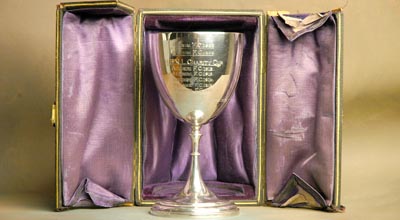
So, to mark the Charity Cup’s Centenary and the ties that bind us together we held a rugby league match at Sir Donald Mc Lean Park Napier between the two top local league sides, Te Rangatahi o Omahu, and Eastern Institute of Technology Students Association.
We established the Charity of the day as ‘Cyclone Recovery in the Cook Islands’.
The Cooks, especially the island of Pukapuka, got bashed by a succession of cyclones earlier this year. I think most Kiwis were somewhat distracted by the enormity of the Indonesian Tsunami and needs of the Cooks missed our attention. Cook Islanders are New Zealand citizens and besides that Cook Islanders are linked by whakapapa to Ngati Kahungunu through the sacred canoe Takitimu.
So we launched the Charity Cup into its second century with a fantastic show. Cook Island dancers and drummers, Kahurangi Dance Troupe, and Allegro band from Auckland.
My whanau and friends, Frankie Stevens, Che Fu and the Villijahz, Tigi Ness and Teina Henry, all contributed their efforts and to the night. We fed about 600 people. The Mad Butcher donated sausages and Watties provided the condiments. With Rose Ngamotu as number one chef and our whanau from Runanga Marae the raw ingredients were converted into a delicious kai. You could have curried sausages on rice, stuffed sausages, or sausages onions and tomato. For the sausage intolerant we had raw fish.
As the people left to go home the boys from Te Aute College sang them out of the stadium. It was a beautiful touch to a fantastic game, and a fantastic, uplifting night.
We raised $2,740 for the Cook Islands. Despite the winter’s night the rhythms and melodies of the Pacific warmed our souls and reminded us that those of us who live in these Isles are all Pacific Islanders at heart

As Che Fu and his dad Tigi Ness sang
Thank you, bless you, bless you, thank you, Aotearoa
Denis.







